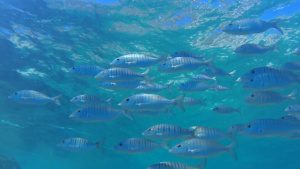Mediterranean Cassiopeia, Cotylorhiza tuberculata, is the jellyfish of the Mediterranean Sea. In the video we see a Cassiopeia jellyfish still at a rather juvenile stage of the “adult jellyfish” phase, that is, it does not yet have the characteristic “fried egg yolk” from which it also takes one of the many bizarre common names.
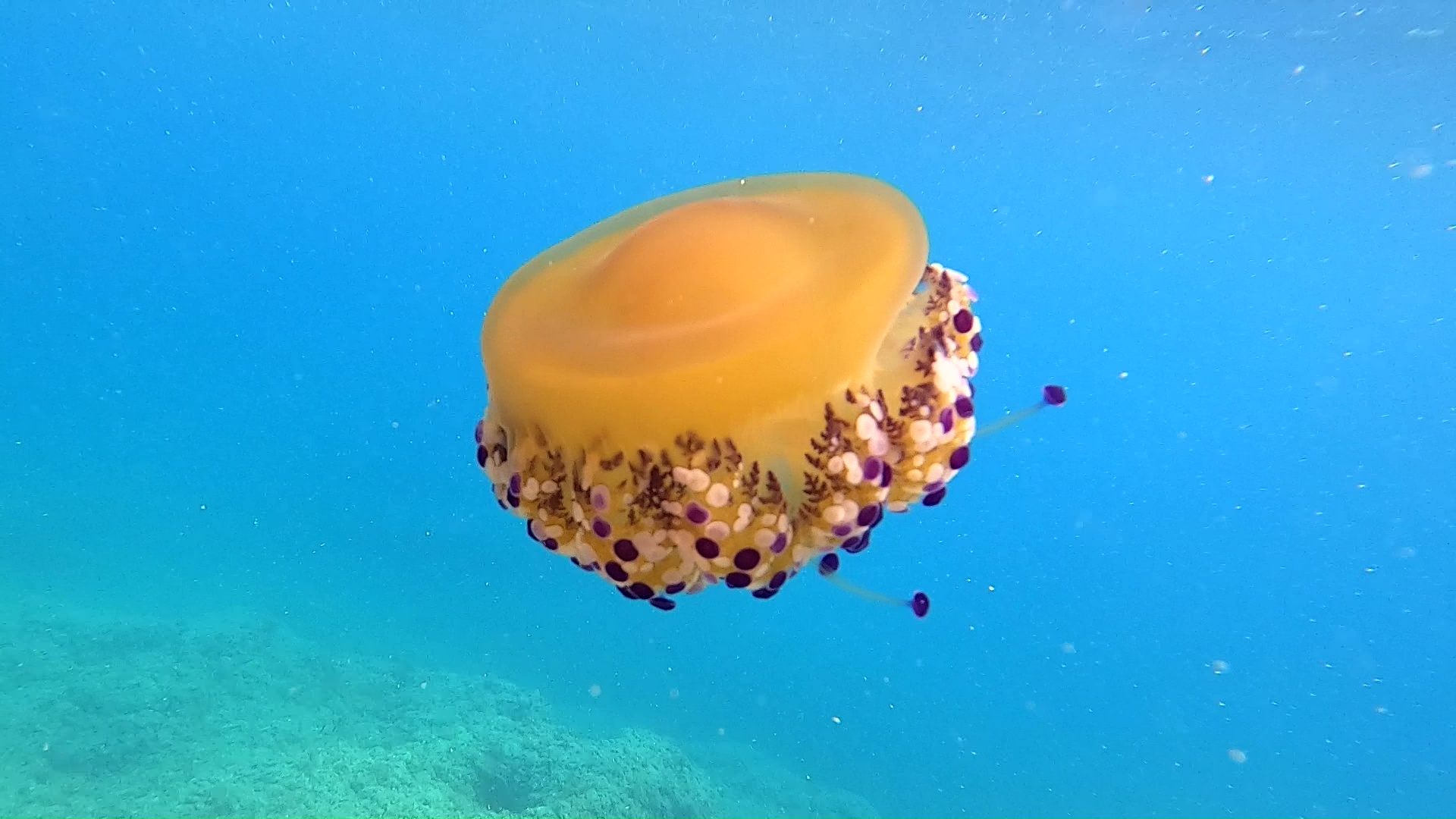
Medusa Cassiopea mediterranea Mediterranean jellyfish Fried egg jellyfish Cotylorhiza tuberculata intotheblue.it
It is a completely harmless jellyfish even if touched in the lower part of the tentacles, at most slight skin irritations can occur for the most sensitive subjects. So when we meet her we can approach her in peace and safety to be able to observe her closely or to be able to photograph and film it.
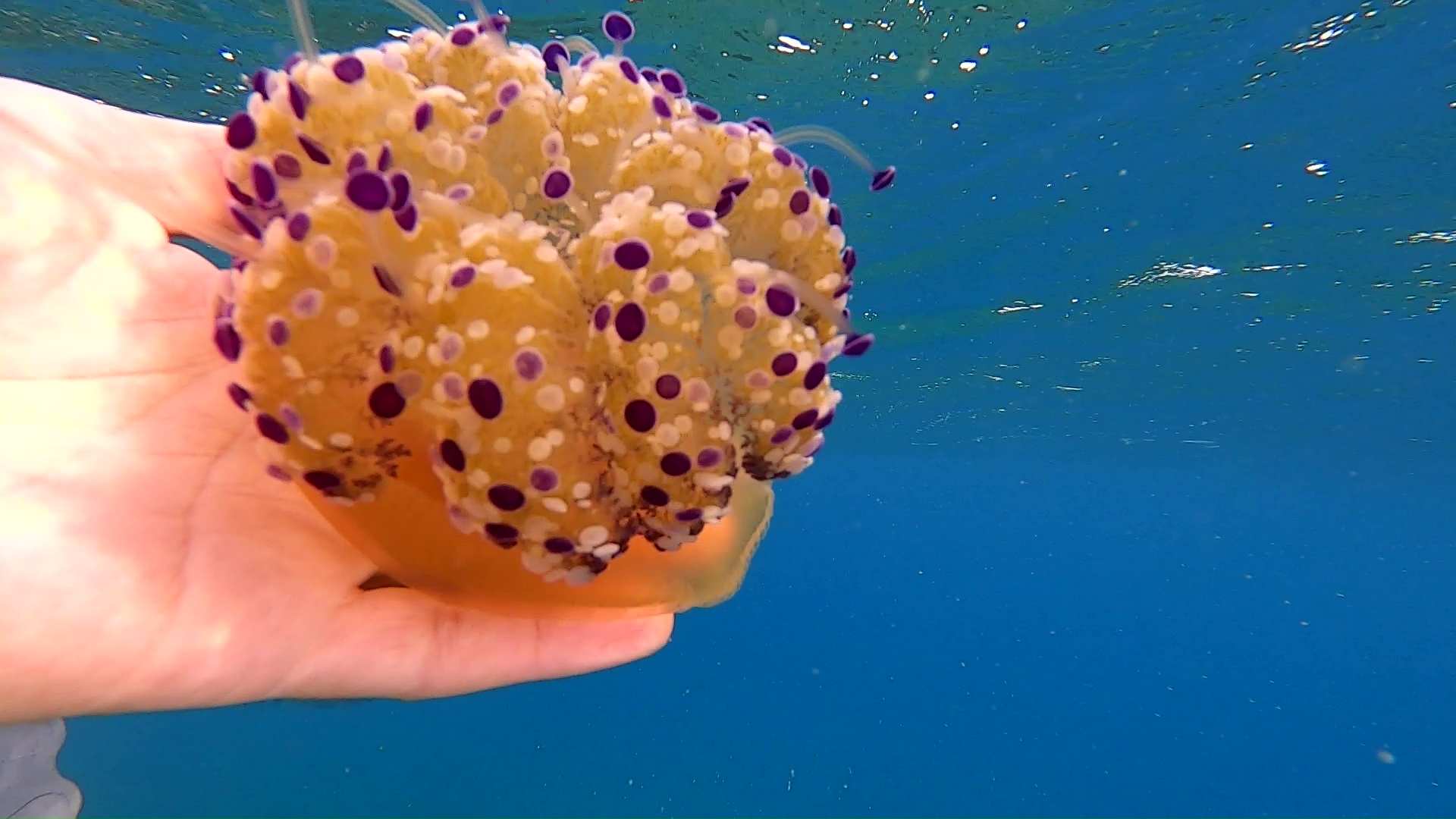
Medusa Cassiopea mediterranea Mediterranean jellyfish Fried egg jellyfish Cotylorhiza tuberculata intotheblue.it
Description
It can reach 40 cm (16 in) in diameter,but is usually less than 17 cm (6.7 in) wide. It seems that this jellyfish’s sting has very little or no effect on humans. However it can cause allergies to more sensitive people, these allergies usually involve itching and scratching in the stung area. The cnidarian‘s smooth, elevated central dome is surrounded by a gutter-like ring. Its marginal lappets are elongated and subrectangular. Each moutharm bifurcates near its base and branches several times. In addition to some larger appendages, there are many short, club-shaped ones that bear disk-like ends.
Development
C. tuberculata are the most common jellyfish of their entire order in the Mediterranean Sea. They experience an annual life cycle marked by summer population blooms, which is likely an adaptive result of the strong seasonal changes in their Mediterranean environment. Their phases of development are quite similar to that of their other jellyfish counterparts. C. tuberculata’s four main stages of growth include the swimming larvae known as planulae, younger, sessile polyps called scyphistomae, the undeveloped young adult intermediates known as ephyrae, and the adult jellyfish forms, called medusas. In a given year, planulae are present from August to November, scyphistomae are present perennially, ephyrae can be seen from May to August, and medusa are prominent from July to November..
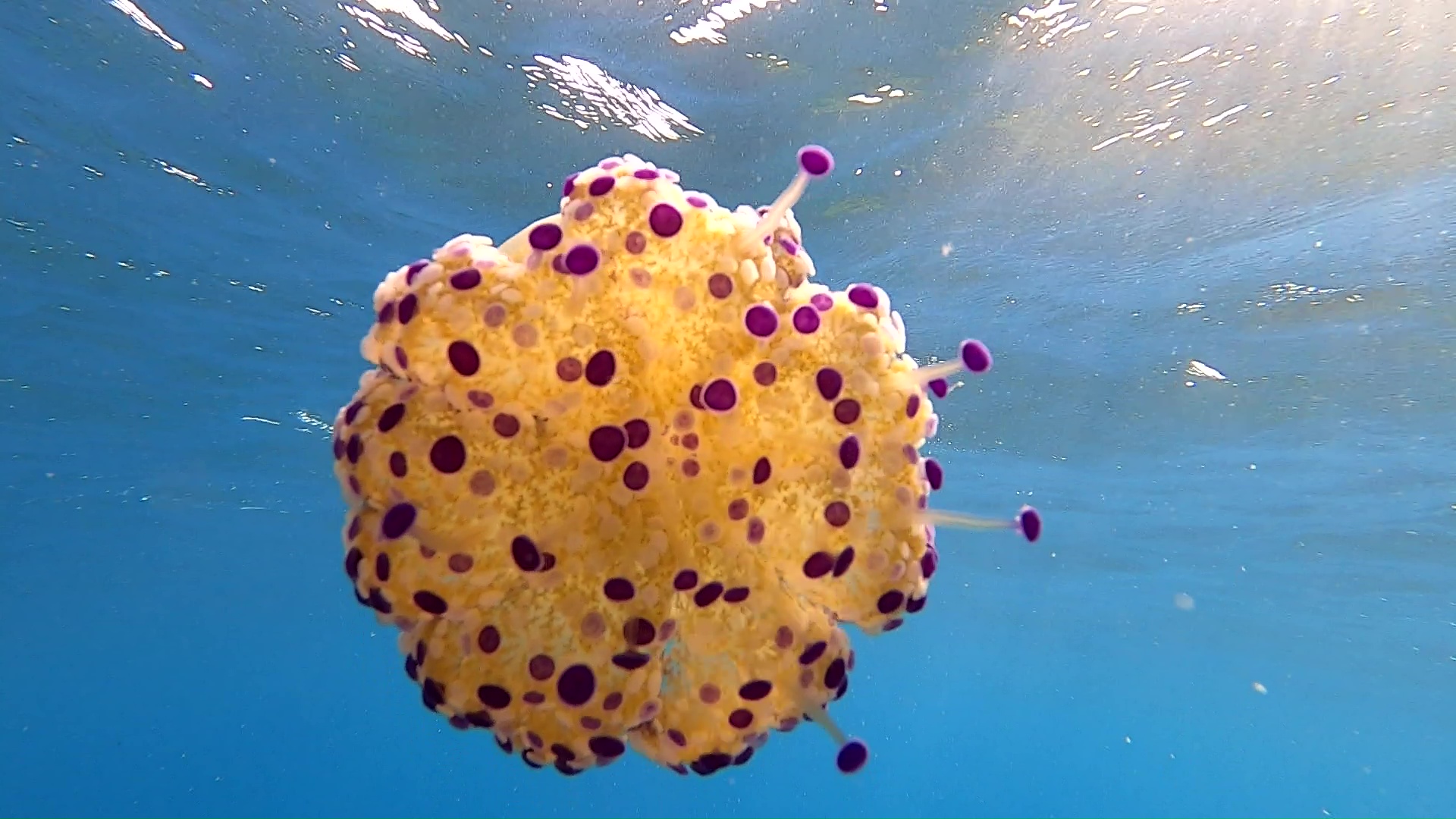
Medusa Cassiopea mediterranea Mediterranean jellyfish Fried egg jellyfish Cotylorhiza tuberculata intotheblue.it
Planulae use their small cilia to propel them through the water, eventually settling on a hard sediment on which they develop into their polyp form. The scyphistomae acquire their photosynthetic algae symbionts during their preliminary development phase, though the mechanism for this is still unclear. These microorganisms live primarily in the mesoglea and lining of the cnidarian’s gastrovascular system, bolstering oxygen production, and remain with the jellyfish for the rest of their lifespans. The polyps also undergo asexual reproduction to create more polyps; parts of each polyp will eventually metamorphose into ephyrae, which range between 1.7 and 4.2 mm in diameter. Young medusa take 8–10 weeks to reach an initial diameter of 3 cm, and then will grow by approximately 3–4 cm per week until reaching their final adult size. Gradually, the medusa develop with an average final diameter of approximately 35 cm.
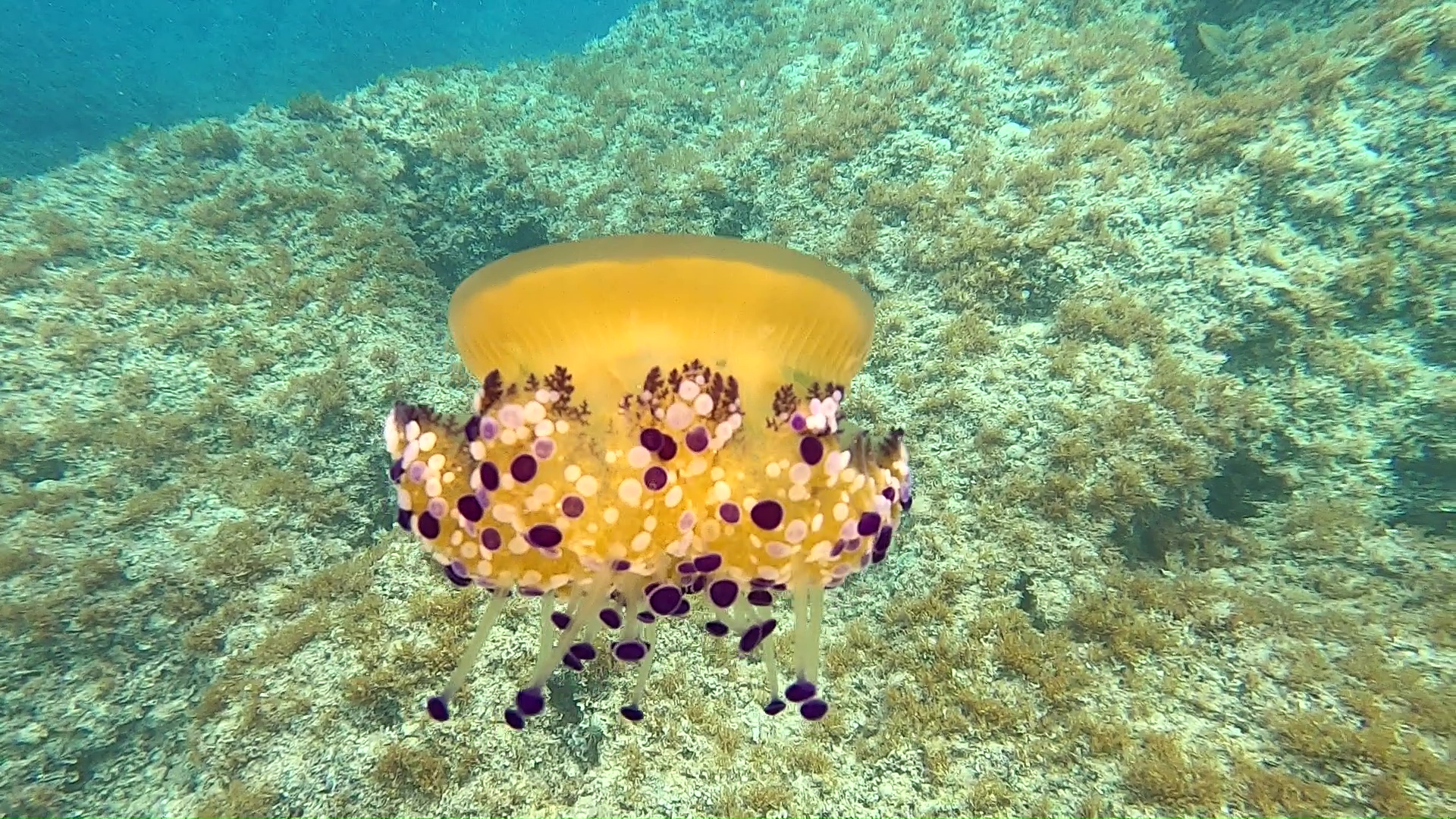
Medusa Cassiopea mediterranea Mediterranean jellyfish Fried egg jellyfish Cotylorhiza tuberculata intotheblue.it
Sexual reproduction between adult jellyfisj typically occurs between August and October. Female C. tuberculata are internally fertilized with sperm from the moutharm appendages of their male counterparts, and after a gestation period, eventually release large numbers of planulae into the water.
With age, the adult C. tuberculata become increasingly damaged, mainly in the central dome of their top umbrella area. While the leading cause of medusa damage is wave-driven and wind-driven abrasion, the next most prominent modes of injury are anthropogenic. Motor boats and fishing nets are prominent causes of injury for these cnidarians, often leading to severe damage. This harm is a mild setback for jellyfish that have not yet finished growing, and when they are able to regenerate the injured anatomy, it often grows back asymmetrically. Older fried egg jellyfish are distinguished by their physical deterioration; their mesoglea are often delicate with a visibly broken exumbrella, and their coloration fades significantly.
https://en.wikipedia.org/wiki/Cotylorhiza_tuberculata
Gallery
 English
English Italiano
Italiano



